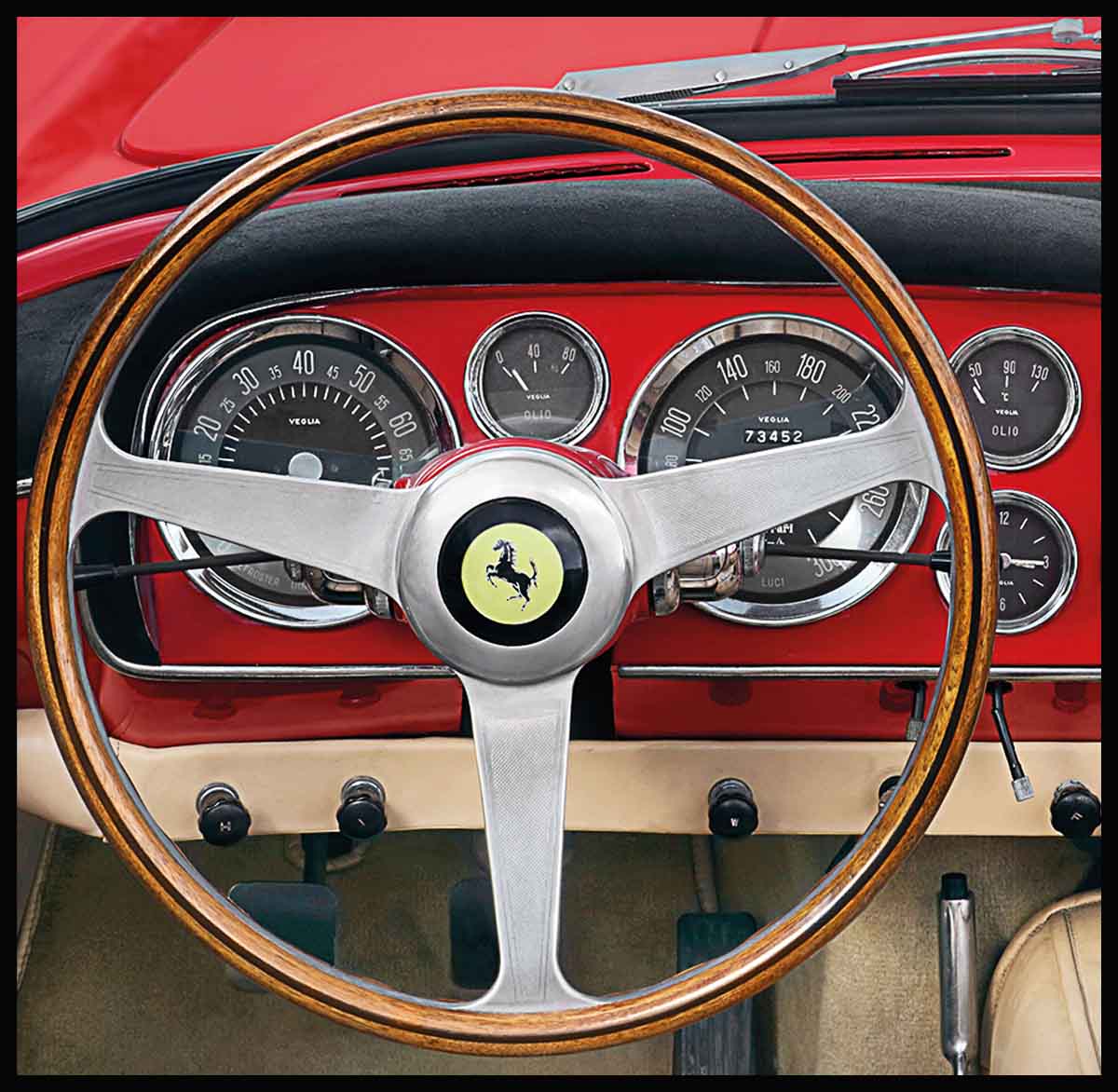
The 1960s Innovation And Energy
“Adding power makes you faster on the straights. Subtracting weight makes you faster everywhere.”
COLIN CHAPMAN, FOUNDER OF LOTUS
The mid-1960s was probably the pinnacle of unfettered driving enjoyment. Roads worldwide were still relatively uncrowded, in many cases speed limits did not apply, and engineers—working from opposing ends of the market spectrum—devised ways to push the boundaries of handling capability.
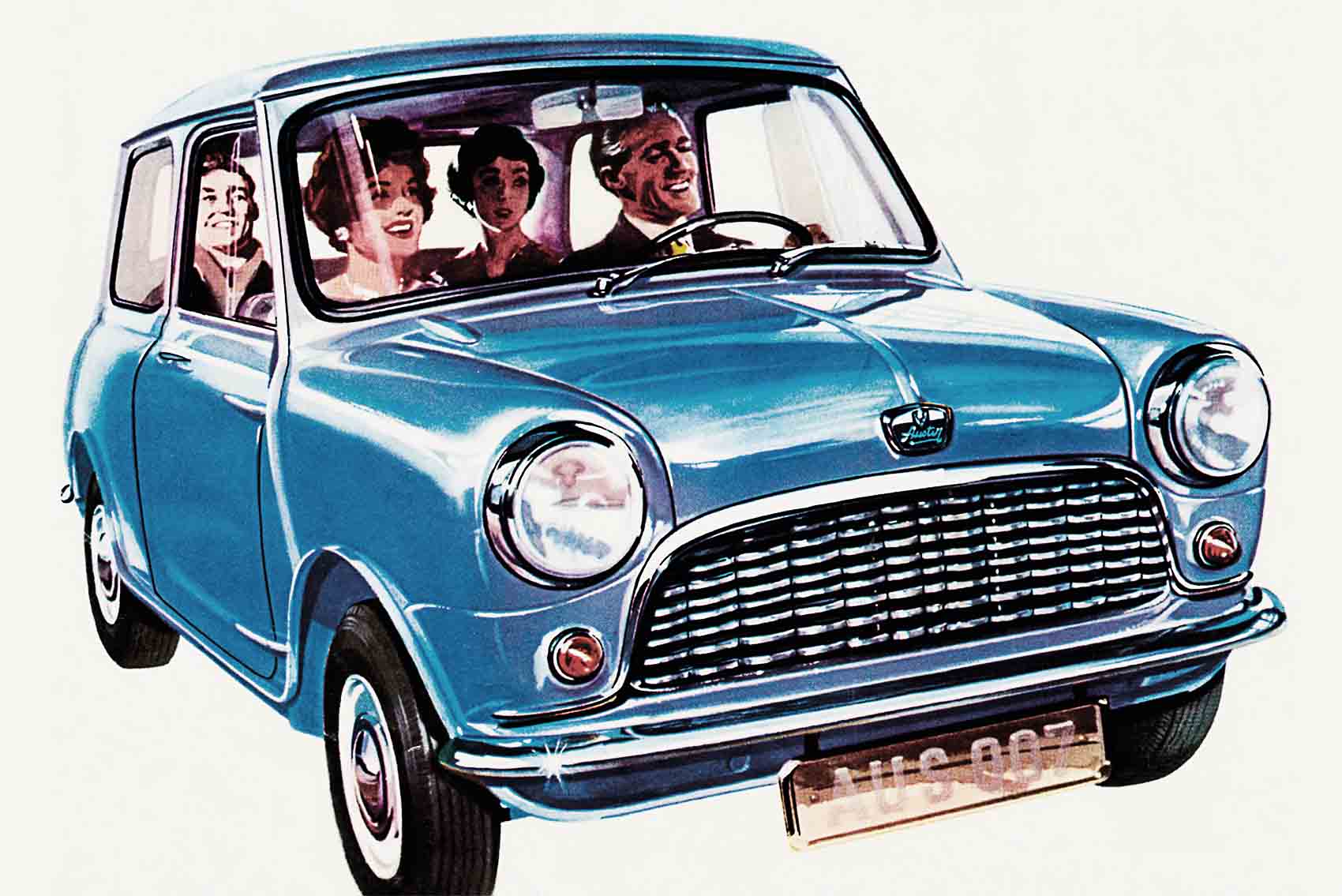
True supercars appeared in leaps and bounds. First, Jaguar’s fabulous E-type of 1961 presented a breathtaking cocktail of speed, style, science, and value. Then Lamborghini’s 1966 Bertone-designed Miura introduced mid-engined, racing-car style, trouncing even the beautifully honed machinery of Ferrari and Aston Martin.
It was also a golden decade for the small sports car, including the MGB, Alfa Romeo Duetto Spider, Fiat 124 Spider, and Triumph Spitfire. The genius concept of the Lotus Elan established a new paradigm in handling brilliance, while the sporty Ford Mustang ushered in the idea of unlimited buyer choices.
Innovation for everyone came as standard with the Mini. Its transverse engine and front-wheel drive delivered sure-footed control. The clever packaging started the trend for small cars that were roomy and practical.
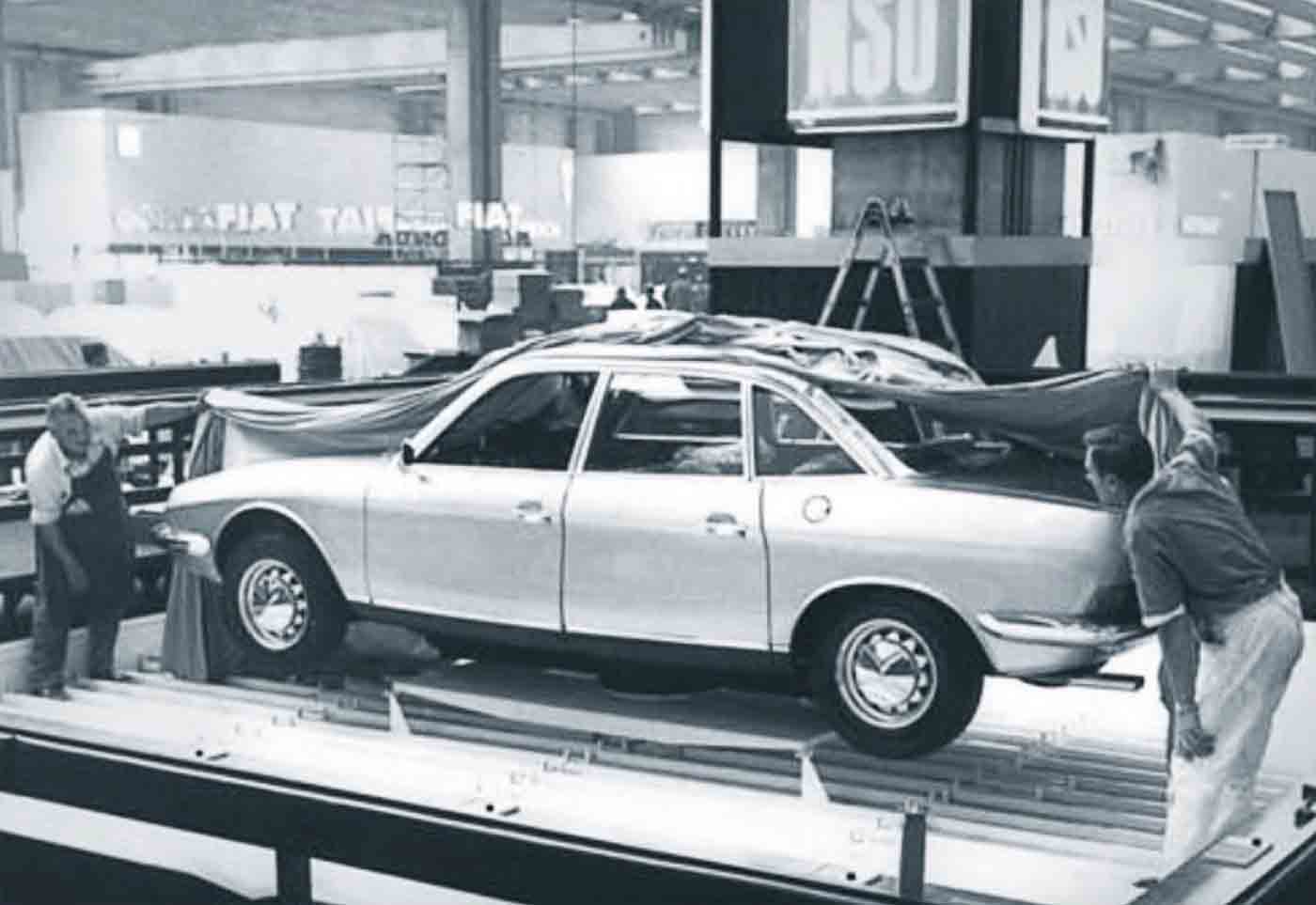
The Wankel rotary engine, fitted to the NSU RO 80, promised simplicity and smooth performance. Poorly designed and built, it proved unreliable and thirsty.
The silken performance of the Wankel rotary engines from NSU Motorenwerke and Mazda excited technophiles. Simple, compact, and with a high power-to-weight ratio, they had many advantages, although the widespread adoption of fuel injection to bolster engine performance was of more commercial importance.
Largely unnoticed, Japanese manufacturers were learning to build cars that were not only easy to drive but also durable and reliable. Not that they yet posed a threat to the establishment in Detroit—they were still in thrall to huge horsepower, massive engine capacities, and muscular styling.
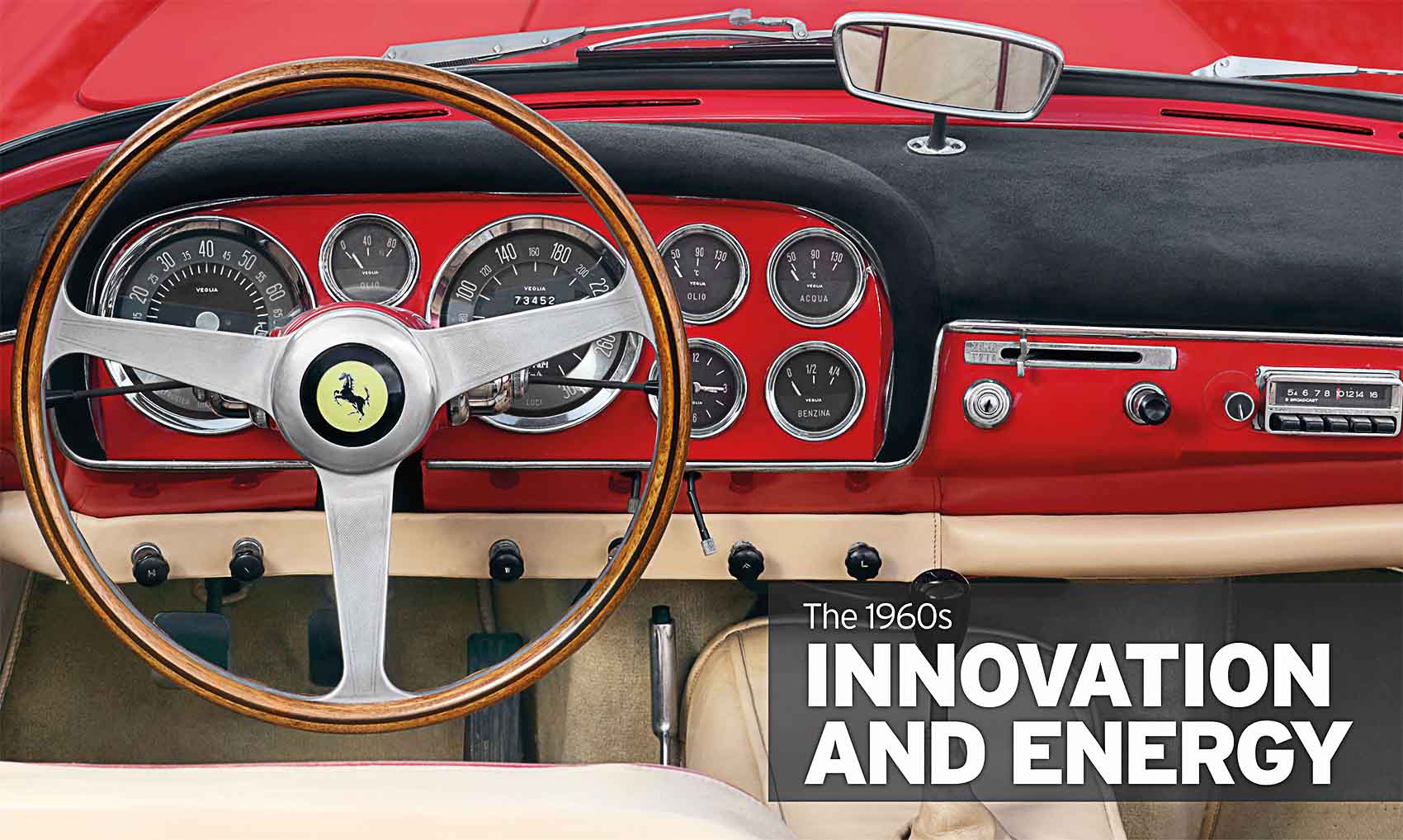
Key events
> 1960 The front-wheel drive, transverse-engined Mini draws a new template for roomy small cars, seating four adults in relative comfort.
> 1961 Jaguar unveils its E-type. With speeds of up to 150 mph (241 km/h), it is one-third of the price of an equivalent Ferrari.
> 1962 Ford produces its 30-millionth V8 engine.
> 1963 Elegance and performance are combined in the new Mercedes-Benz 280SL roadster.
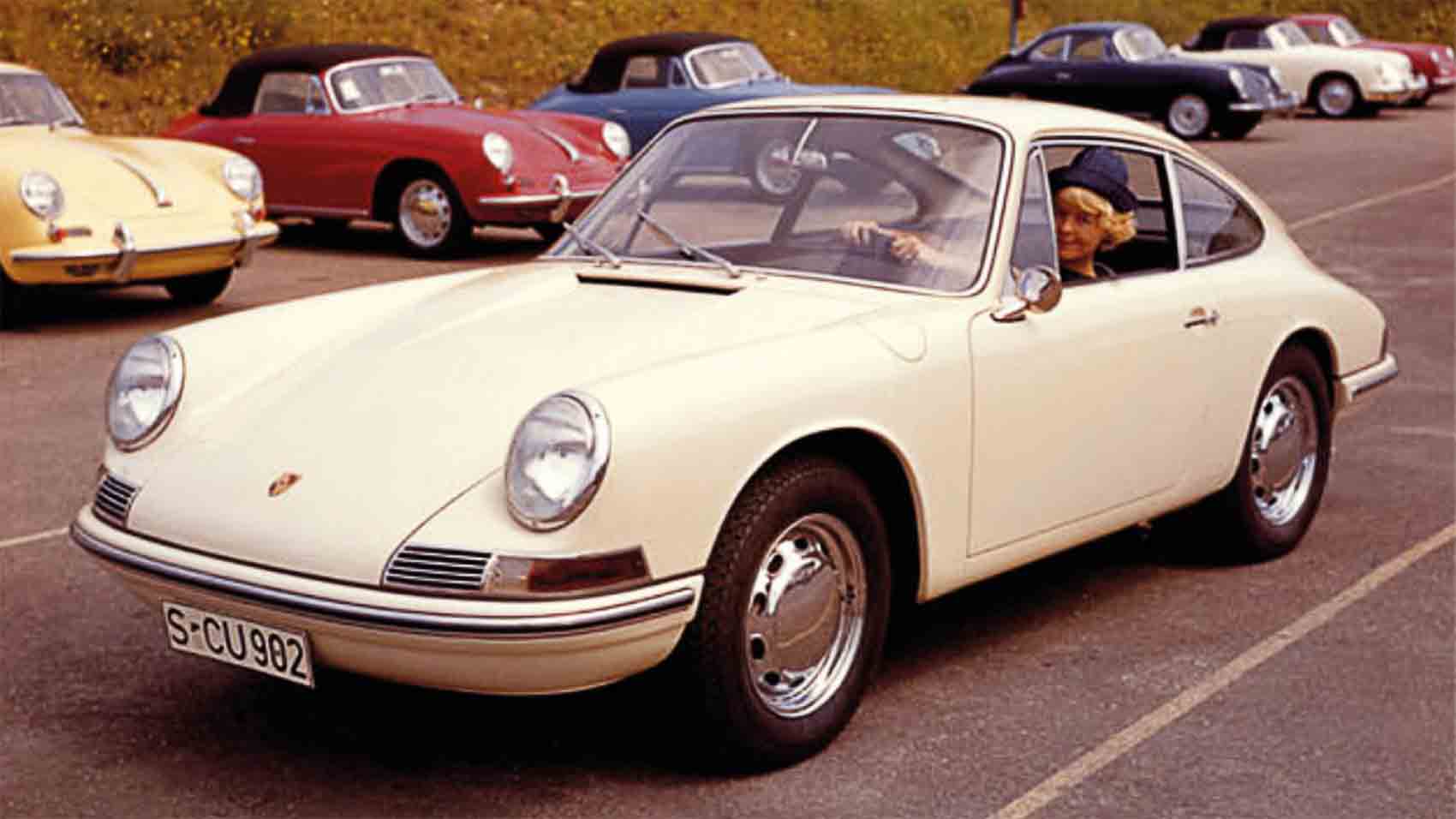
Originally named the Porsche 901, a legal dispute with Peugeot, saw it rebranded the 911. Revised and updated many times, it is still in production.
> 1963 The first of Porsche’s long-lived 911 coupes makes its debut, replacing the much-loved 356.
> 1964 The Ford Mustang made its debut at the New York World’s Fair; the Plymouth Barracuda is among America’s first “muscle cars”.
> 1965 Launch of the Rolls-Royce Silver Shadow, the first “Roller” without a separate chassis.
> 1966 End of the line for the Studebaker marque after 64 years.
> 1966 Toyota introduces the first of its hugely successful Corolla series.
> 1967 The NSU RO 80 is a futuristic executive saloon from Germany, complete with the first twin-rotor Wankel engine.
> 1968 Ferrari’s 365 GTB4 Daytona is the world’s most desirable supercar.
It is a quote. The Classic Car Book – The Definitive Visual History 2016




